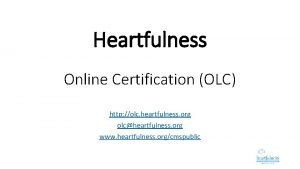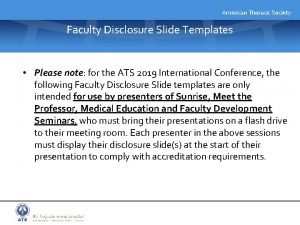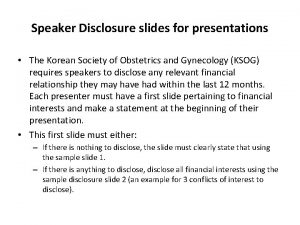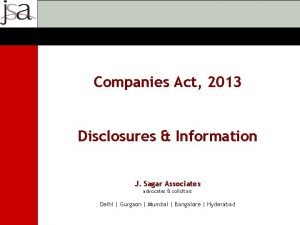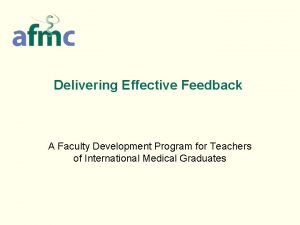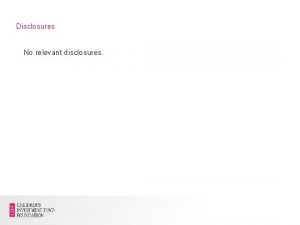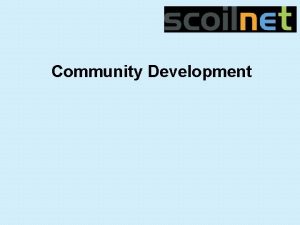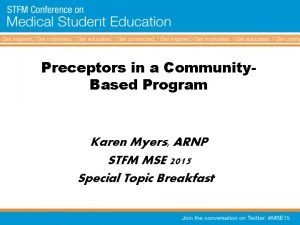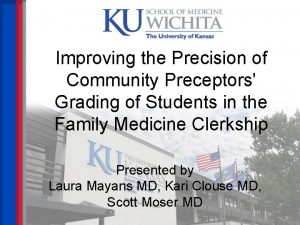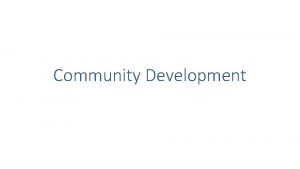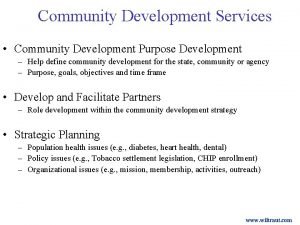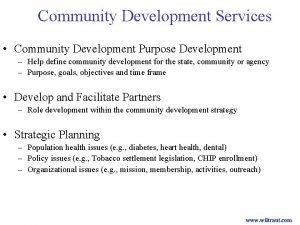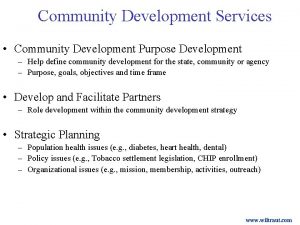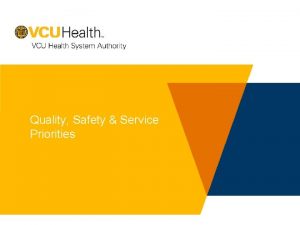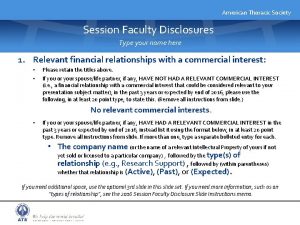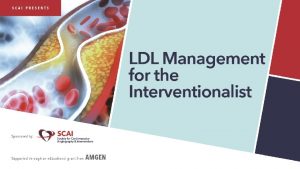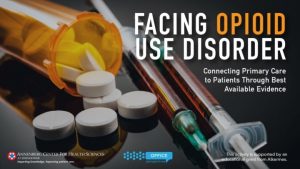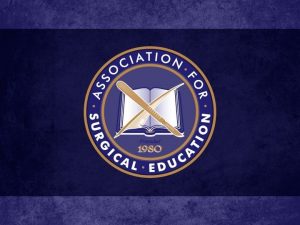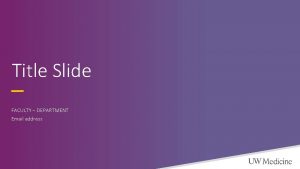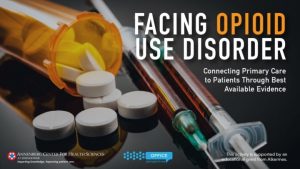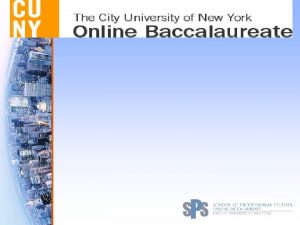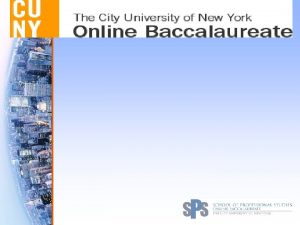Faculty Development for Community Preceptors Disclosures Neither Dr





























- Slides: 29

Faculty Development for Community Preceptors

Disclosures • Neither Dr. Power nor Dr. Brink have any disclosures.

Objectives • Review background, our situation • Identify readily available resources useful for preceptor development. • Use "ekstasis, " a peer to peer consultation model, to explore the causes of and solutions to challenging precepting encounters. • Discuss a community preceptor faculty development effort that increases preceptor retention and increases preceptor satisfaction with mentoring clerkship students.

Background • Approx 210 (past) years 3 and 4 clerkship students per year in twelve 4 -week periods • Usual (past) clerkship capacity=18 (x 12) • Per period: approx 11 at residency sites • approx 7 at community sites • Typically 80 -120 / year with community preceptors (includes electives too)

Our community preceptors • Not directly reimbursed • Indirect MERC funds and one system rewards teaching and volunteering • Past grads, “giving back”, enjoy it. .

Our community preceptors • • • Stated minimum of 4 students per year 45 “on the books”, active 29 All ‘adjunct’ appointments Flexible coordinator and outreach MD Range 0 – 12 students per year Usually 2 awards each year

Community Preceptor Faculty development • • • 0. 1 FTE Also commitment to rural preceptors (RPAP) Site visit “required” of new preceptors “Offered” to established preceptors “First time anyone from the university has crossed this threshold in 29 years”

Community Preceptor Site visits • 2015/6: 12 visits (often with program coordinator) • 2016/7 so far: 7 visits • One case example: – Suburban clinic – 1 -2 students/yr 2010 -4 – Site visit 2014; return visit 2015 – Now 12 students / year – Highly rated: 2 awards to principal preceptors

Community preceptors: • Do they want faculty development?

Indicate the VALUE you would place on the following incentives you DO NOT CURRENTLY RECEIVE Very Great Some Very little No Value Teaching recognition certificate or plaque 2 5 13 16 12 Annual Preceptor Dinner Site Visit 1 2 5 7 15 9 14 17 14 14 Direct financial reimbursement 2 9 9 11 16 Fall 2012 survey, n=50

Comments “I would like to know what I can do to be a more effective preceptor. I sometimes feel as if they [students] do not seem real interested in family medicine - how can I capture their attention? I also would like to know what topics are discussed during clerkship sessions. ”

Welcome to the Family Medicine Clerkship!

Typical Schedule • 12: 00 -12: 15: Lunch and introductions, wait for late comers to arrive • 12: 15 -12: 30: Watch One Minute Precepting videos and then discuss what could have gone better

Typical Schedule • 12: 30 -12: 45: Peer-to-peer consultation in groups not larger than 8 OR watch 3 -minute feedback video and then discuss/ role play scenarios • 12: 45 -1: 00: Questions and wrap up

“Ekstasis”: Peer-to-Peer Consultation • Has anyone had an experience with a student that you’d like to share with the group? ‘I remember the last time I had a student, they were so slow and inefficient that I was completely behind every day. Never again. . ’.

“Ekstasis”: Peer-to-Peer Consultation • 1. Appoint a facilitator: to manage time and to keep participants “on script” and on time.

“Ekstasis”: Peer-to-Peer Consultation • 2. Present the case: 5 minutes – Who are the major players? – Prior interactions? – What has the presenter done so far/decided not to do?

“Ekstasis”: Peer-to –Peer Consultation • 3. Team asks fact questions: 5 minutes – Restrict to only fact questions -- no problem solving.

“Ekstasis”: Peer-to –Peer Consultation • 4. Group does diagnostic brainstorming, presenter watches and listens: 10 minutes – What are the underlying or hidden issues? – Why is the presenter concerned about the situation?

“Ekstasis”: Peer-to-Peer Consultation • 5. Group does action steps brainstorming, presenter watches and listens: 10 minutes

“Ekstasis”: Peer-to –Peer Consultation • 6. Presenter reflects on what she/he heard: - 5 minutes

“Ekstasis”: Peer-to-Peer Consultation • Present the case: 5 minutes • Team asks fact questions: 5 minutes • Group does diagnostic brainstorming, presenter watches and listens: 10 minutes • Group does action steps brainstorming, presenter watches and listens: 10 minutes • Presenter reflects on what she/he heard: 5 minutes

Typical Schedule • 12: 00 -12: 15: Lunch and introductions • 12: 15 -12: 30: Precepting videos and discussion • 12: 30 -12: 45: Peer-to-peer consultation OR feedback video and then discuss scenarios • 12: 45 -1: 00: Questions and wrap up

Feedback • Ask the learner to self assess – “How did that delivery go? ” • Tell what you observed, both positive and corrective, both explanation and diagnosis – “It looked like your back was really bent with the bed down so low. ” • Ask again about understanding – “What might you do differently next time? ”

Resources • Leadership theory and practice: a “case” in point, Armandi, B. , Oppedisano, J. , Sherman, H. Management Decision, 41 (10), 2003, 1076 -1088. • Heifetz and Linsky, Leadership on the Line, Harvard Business Review Press, First Edition (April 18, 2002)

Resources • Peer-to-peer consultation: – https: //ekstasispeerconsultations. com/ • Minnesota Medical Association Preceptor Initiative: – http: //www. mnmed. org/advocacy/Key. Issues/MMA-Preceptor-Initiative

Resources • One Minute Preceptor (bad example): http: //www. youtube. com/watch? v=937 G 0 m 5 SUs. I • One Minute Preceptor (good example): http: //www. youtube. com/watch? v=l. Ceyzp. U 7 PMw

Resources • Giving Feedback: https: //www. youtube. com/watch? v=SYXg. Mo b. MU 8 U

Resources – What Else?
 Olc heartfulness
Olc heartfulness Is zero prime composite or neither
Is zero prime composite or neither Disclosure slide template
Disclosure slide template Voluntary disclosures meaning
Voluntary disclosures meaning Nothing to disclose slide
Nothing to disclose slide Website disclosures under companies act 2013
Website disclosures under companies act 2013 When becomes weakness
When becomes weakness Development in community
Development in community Fulbright faculty development program
Fulbright faculty development program Feedback for faculty development programme
Feedback for faculty development programme Kontinuitetshantering
Kontinuitetshantering Typiska drag för en novell
Typiska drag för en novell Nationell inriktning för artificiell intelligens
Nationell inriktning för artificiell intelligens Returpilarna
Returpilarna Shingelfrisyren
Shingelfrisyren En lathund för arbete med kontinuitetshantering
En lathund för arbete med kontinuitetshantering Kassaregister ideell förening
Kassaregister ideell förening Personlig tidbok fylla i
Personlig tidbok fylla i Sura för anatom
Sura för anatom Förklara densitet för barn
Förklara densitet för barn Datorkunskap för nybörjare
Datorkunskap för nybörjare Stig kerman
Stig kerman Debatt artikel mall
Debatt artikel mall För och nackdelar med firo
För och nackdelar med firo Nyckelkompetenser för livslångt lärande
Nyckelkompetenser för livslångt lärande Påbyggnader för flakfordon
Påbyggnader för flakfordon Kraft per area
Kraft per area Publik sektor
Publik sektor Lyckans minut erik lindorm analys
Lyckans minut erik lindorm analys Presentera för publik crossboss
Presentera för publik crossboss
